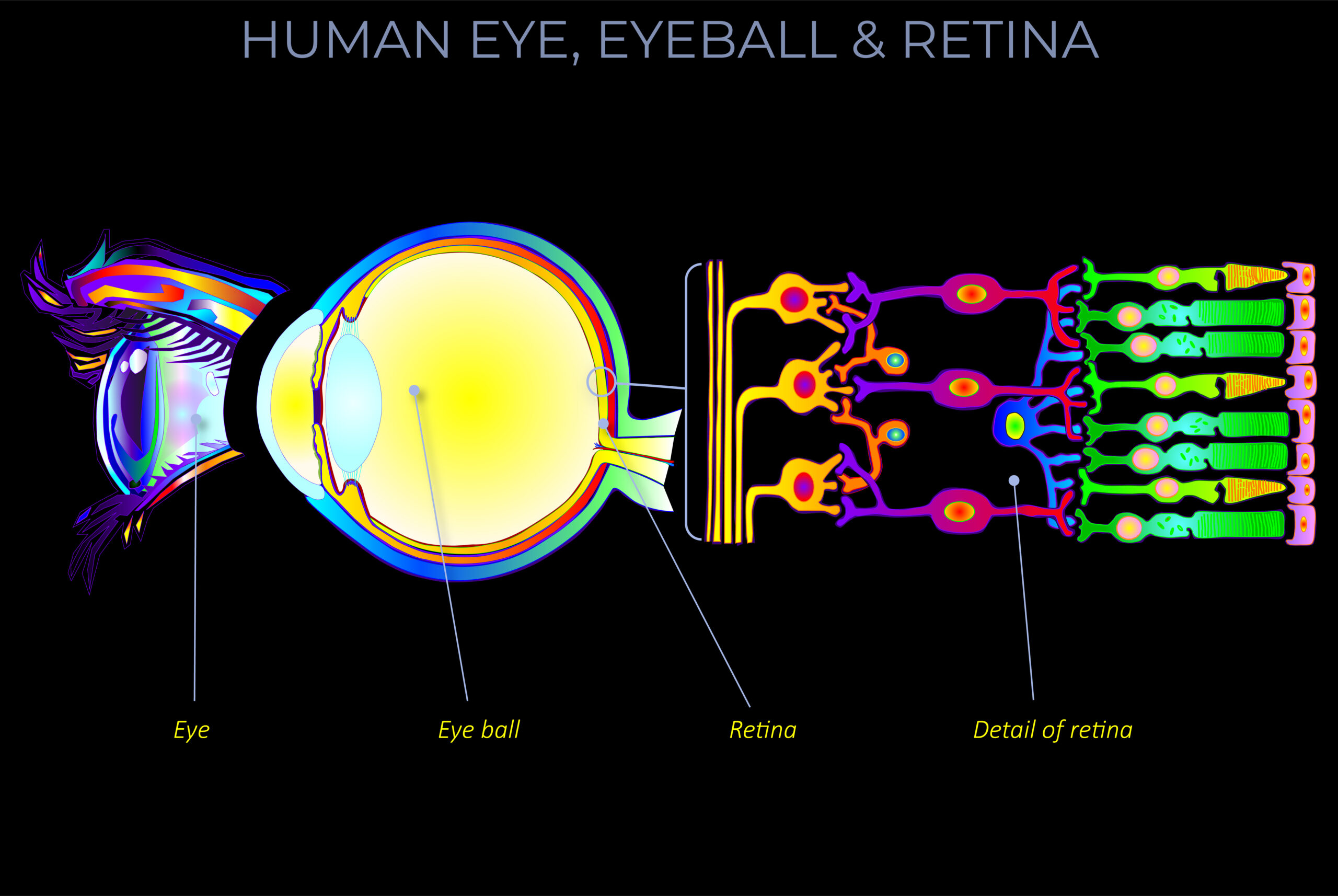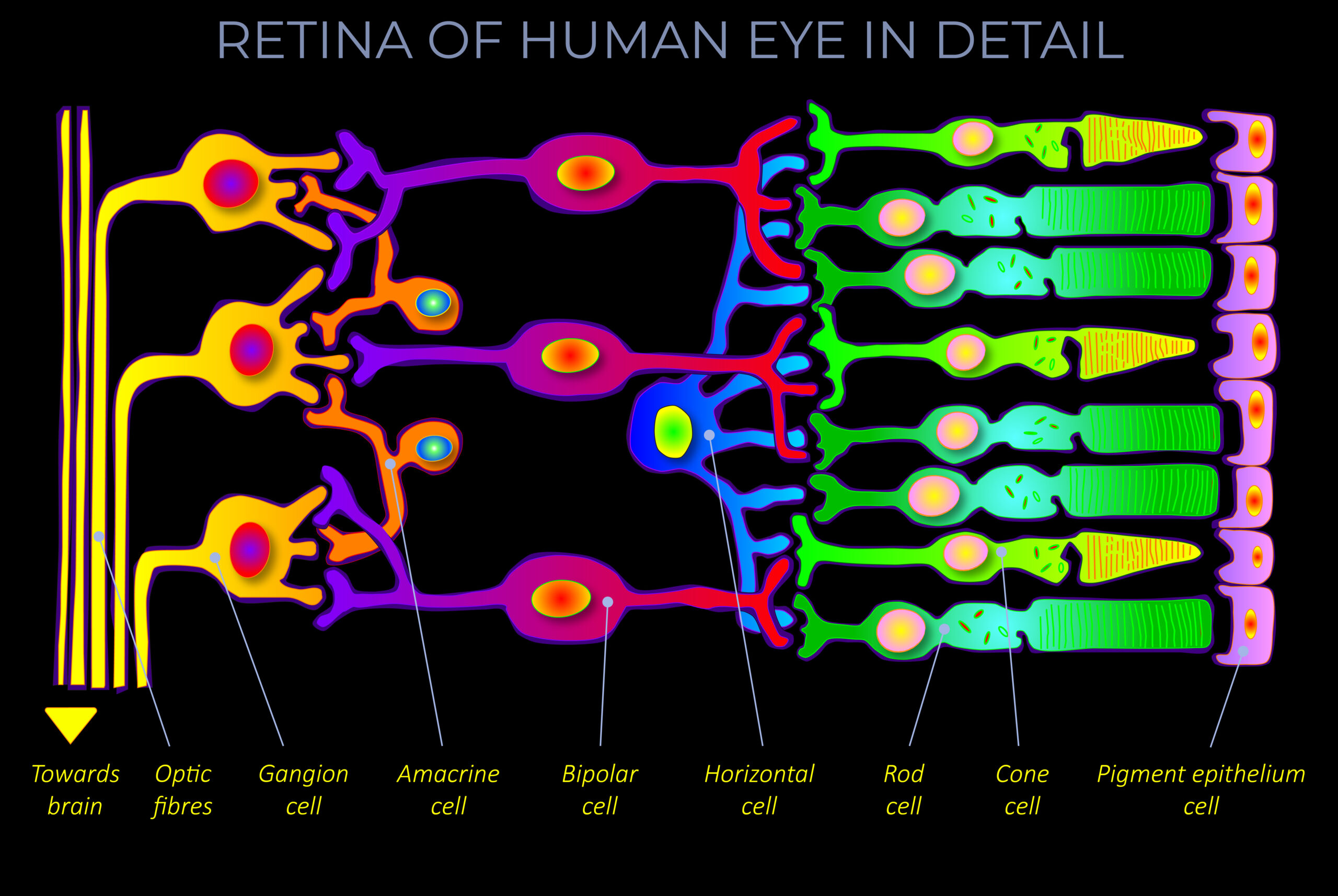Bipolar cells are the retinal interneurons that provide the primary pathway from photoreceptors (rod and cone cells) to ganglion cells. In addition to directly transmitting signals from photoreceptors to ganglion cells, they connect to amacrine cells that assist in integrating information and forming a comprehensive picture of an entire visual scene.
- Bipolar cells are linked to the light-sensitive rod and cone cells in the retina of the human eye.
- There are approximately a dozen types of bipolar cells, all of which serve as centres for integration.
- Each type of bipolar cell acts as a dedicated channel for information about light, collected by either a single or a small group of rod or cone cells.
- Each type of bipolar cell interprets and relays its own version of information gathered from photoreceptors to ganglion cells.
- The signals relayed from bipolar cells to ganglion cells include not only the direct responses of bipolar cells to signals resulting from photo-transduction but also responses to signals indirectly received via information from amacrine cells.
- We could envisage a type of bipolar cell that connects directly from a cone to a ganglion cell and simply conveys information about wavelength. The ganglion cell uses this information to discern whether a specific point in the observed scene is red or green.
- Not all bipolar cells create synapses directly with a single ganglion cell. Some relay information sampled by various groups of ganglion cells. Others end at different locations within the retina’s complex network of interconnections, enabling them to deliver packets of information to a range of locations and cell types.
- Bipolar cells are the retinal interneurons that provide the primary pathway from photoreceptors (rod and cone cells) to ganglion cells.
- In addition to directly transmitting signals from photoreceptors to ganglion cells, they connect to amacrine cells that assist in integrating information and forming a comprehensive picture of an entire visual scene.
- There are approximately a dozen types of bipolar cells, all of which serve as centres for integration.
- Each type of bipolar cell acts as a dedicated channel for information about light, collected by either a single or a small group of rod or cone cells.
- Each type of bipolar cell interprets and relays its own version of information gathered from photoreceptors to ganglion cells.


